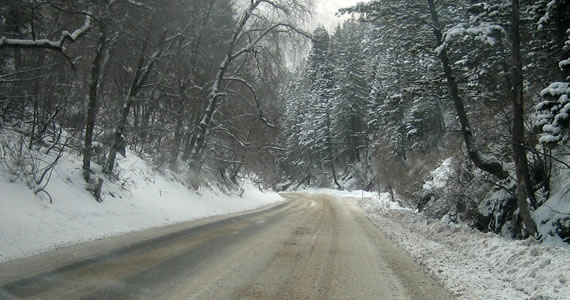Driving is an act which needs attention and care even at the best of times. Even if you are obeying the traffic rules, it is entirely possible that a fellow driver or a pedestrian has not. In such situations the priority is to save lives and quick reaction helps. If you are driving during the winter, the level of concentration required is only multiplied a few times over. We outline a few tips for young drivers planning to drive during winters.
Winter Driving Tires –
For better control and traction, winter tires are a necessity. Snow and ice (sleet) make the roads slippery and good quality winter tires help emergency brakes or sudden change in directions immensely. With dropping temperatures the air pressure inside the tires varies too, so keep an eye on them.
Accelerate safely –
Start slow! Most driving lessons recommend it is always better to gently step on the gas on slippery surfaces so your wheels do not over spin. Similarly, plan ahead while you prepare to stop so that you do not have to brake abruptly. It is likely that you still might have to make sudden stops or your vehicles might slip a little. To prepare for such situations, secure your valuable electronics (laptop, cellphone) or loose items (coffee cup) properly so that they don’t get tossed about. Flying objects can either injure you or distract you, causing accidents.
Allow more space –
According to Driving School Brisbane it is a good practice to keep safe distance with fellow vehicles. While following a vehicle or driving next to a vehicle on multiple lane roads, it minimizes errors and accidents even if your car does not stop exactly where you wanted it to, as it frequently happens on icy roads.
Keep winter tools –
Traveling in winters can lead you to unexpected situations even if you are following safety regulations. Check your battery and exhaust before you start. Flashlights, first-aid kits, snow shovels, extra pair of winter boots, snow scraper, extra supply of cleaning liquids for windscreens, anti-freeze and booster cables are just some of the essentials which must be stocked in your trunk. You might not ever need them, but when you do need anything it is better to find them with you than being deserted in the middle of the road on a cold night.
Maintain visibility –
Most of the driving errors reported in Driving School Brisbane are majorly due to lack of visibility for drivers. When you are following a vehicle, a spray can cover your windscreen. Keep your wipers on. Also ensure your high beam lights are always on so you can see what is ahead of you.
Last but not the least; do not panic if you hit ice. The first thing to do is to get off the accelerator immediately. Remember a slower vehicle is always easier to control. Now shift to neutral gear and start steering yourself to safety. Sudden brakes will only make the vehicle slide out of control more. Stick to these driving lessons and ensure your ride in the winters is a safe one.
Mark Long is a renowned authority in winter driving. Having spent nearly two decades in Australia, he has vast experience in driving through ice and snow. Now settled in Sydney, he shares those as part of his driving lessons to young drivers.














